Two days, three farms and a party!
Doddington Hall
For the first visit of the Study Tour we were invited to Doddington Hall Estate, which lies five miles east of Lincoln. Already an established tourist attraction with 300,000 visitors per year, the estate is embarking upon a rewilding project across its 1900 acres, of which 600 acres is woodland, 1000 was formerly arable (in 2021/2 it will be 300 acres) and 275 acres is permanent grassland.
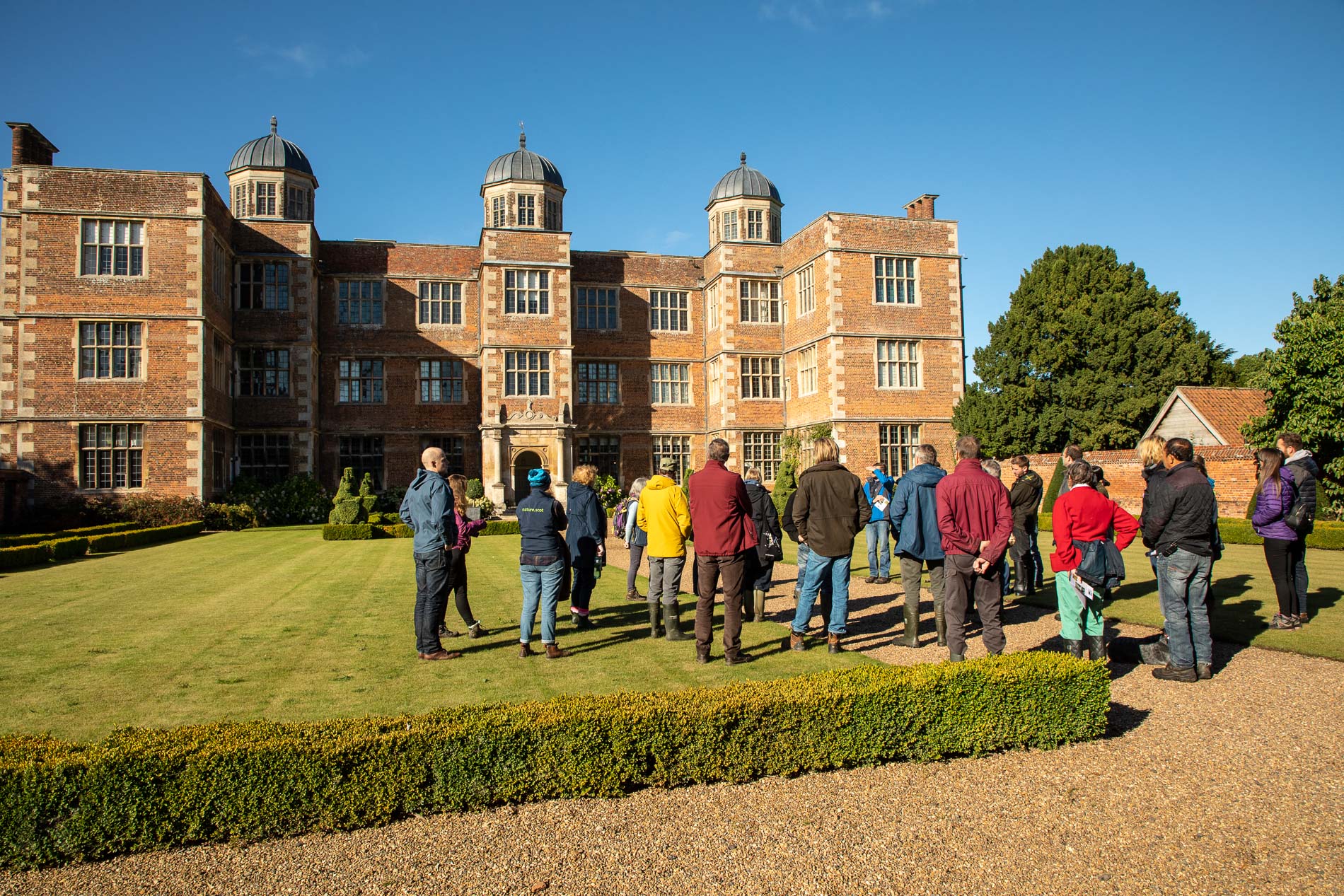 The tour started with a look at the 16th century hall, which was originally built for Thomas Tailor, the registrar to the Bishop of Lincoln, and is now the family home of Claire and James Birch.
The tour started with a look at the 16th century hall, which was originally built for Thomas Tailor, the registrar to the Bishop of Lincoln, and is now the family home of Claire and James Birch.
We proceeded to the impressive two-acre walled kitchen garden, which supplies the café and farm shop, and has recently converted to a no-dig system.
A walk through the parkland at the front of the house, which was until recently an arable field, took us to a wet corner of the field called Donkey Close, that showed a high level of biodiversity, such as Devil’s-bit scabious which was still flowering in late September. Isobel Wright, project manager of Wilder Doddington, spoke about the livestock management, both present and future, which would enable the biodiversity to spread from this area out over the rest of the farm.
Walking down the Avenue which stretches westward from the hall, we passed through the docile herd of Lincoln Red cattle, and towards one of the estate’s farm yards, where we heard from consultant Liz Genever and livestock manager Hari Limbu about the challenges of changing the grazing management to suit the new system. They spoke of finding the correct stocking density within narrow parameters, which would be set by the requirements of the land, ecology, and livestock, and the criteria set by Natural England. The transition to wilding also requires changes to calving periods and herd management.
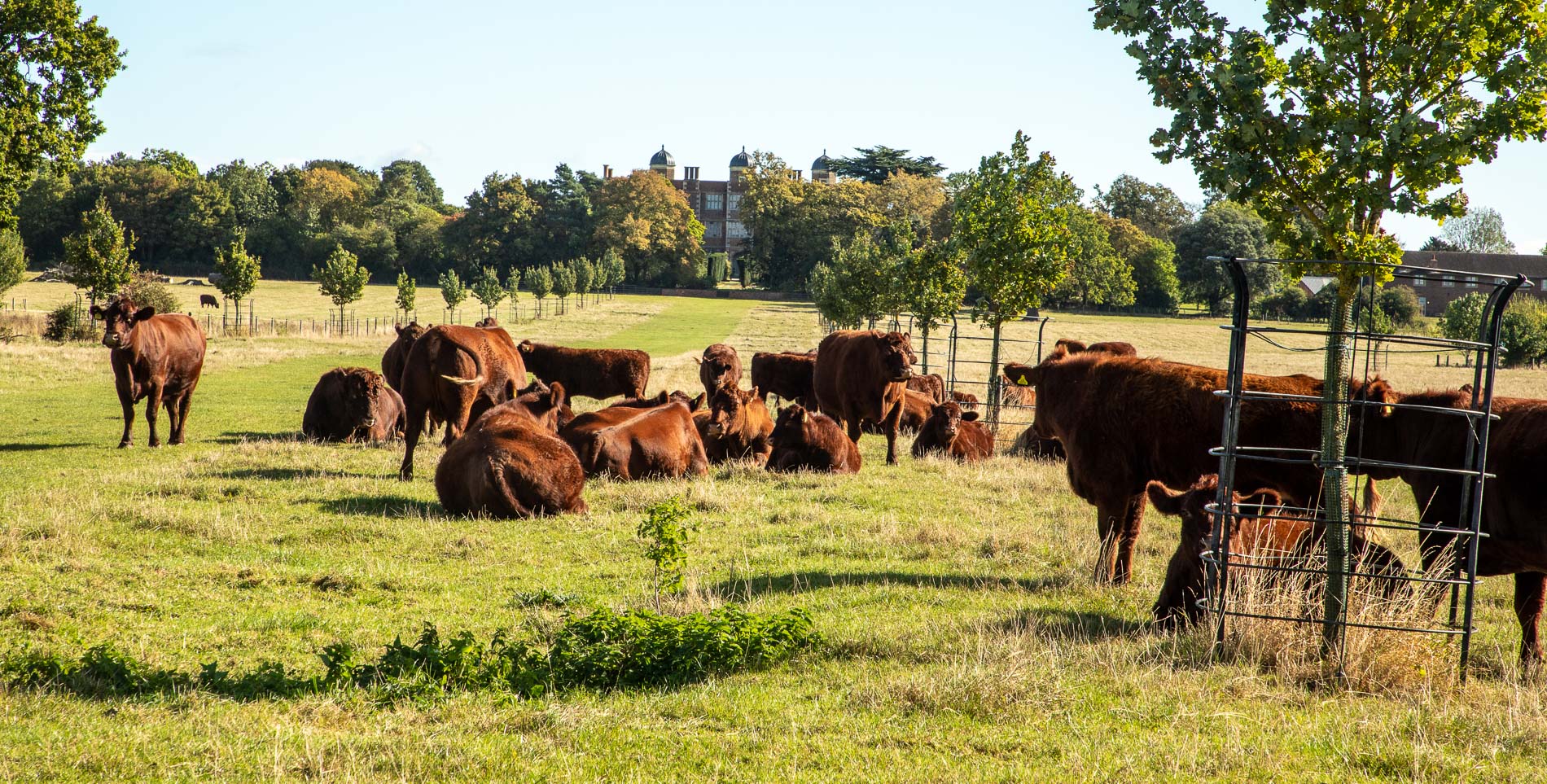
We also heard from Rachel Fuller of NoFence, the Norwegian company behind the increasingly popular GPS collar system, used as an alternative to traditional electric fencing, and had the chance to see the herd of Lincoln Red’s which were wearing the collars. The collars produce an audible noise when the animal approaches the boundary and gets a shock if it crosses it. Crucially, they will not get a shock coming back the other way to re-join the herd.
A walk past the pyramid (built from blocks of recycled concrete from the estate) took us to one of the recently ‘wilded’ former arable fields. Isobel explained the difficulty in ensuring the right balance is struck between grazing to encourage grass and wildflowers and excluding stock to encourage scrub and tree regeneration. There is also the challenge of changing mindsets from that of ‘manager’ to ‘facilitator’. She also explained that Wilder Doddington do not see rewilding as a ‘religion’ and would make interventions where it was deemed necessary or beneficial, for example in putting up owl boxes. We also learned about the benefits the project would have to wetland creation, and the subsequent reduction of flooding in Lincoln.
Before we left, there was lunch with beef from the estate in the fascinating Wagon Barn.
Hills of Edingley
The first PFLA Study Tour was hosted here. Arriving at the Hill’s we were greeted by the team: John and Margaret Hill together with their daughter Rebecca, who has run the café/shop for the past few years, and son, Andrew, who lives at the neighbouring farm, Turncroft, which they run together with Ashcroft Farm, a total of 250 acres. We also met Josh and Ant, who help out with the day to day activities on the farm and were our tractor drivers for the tour.
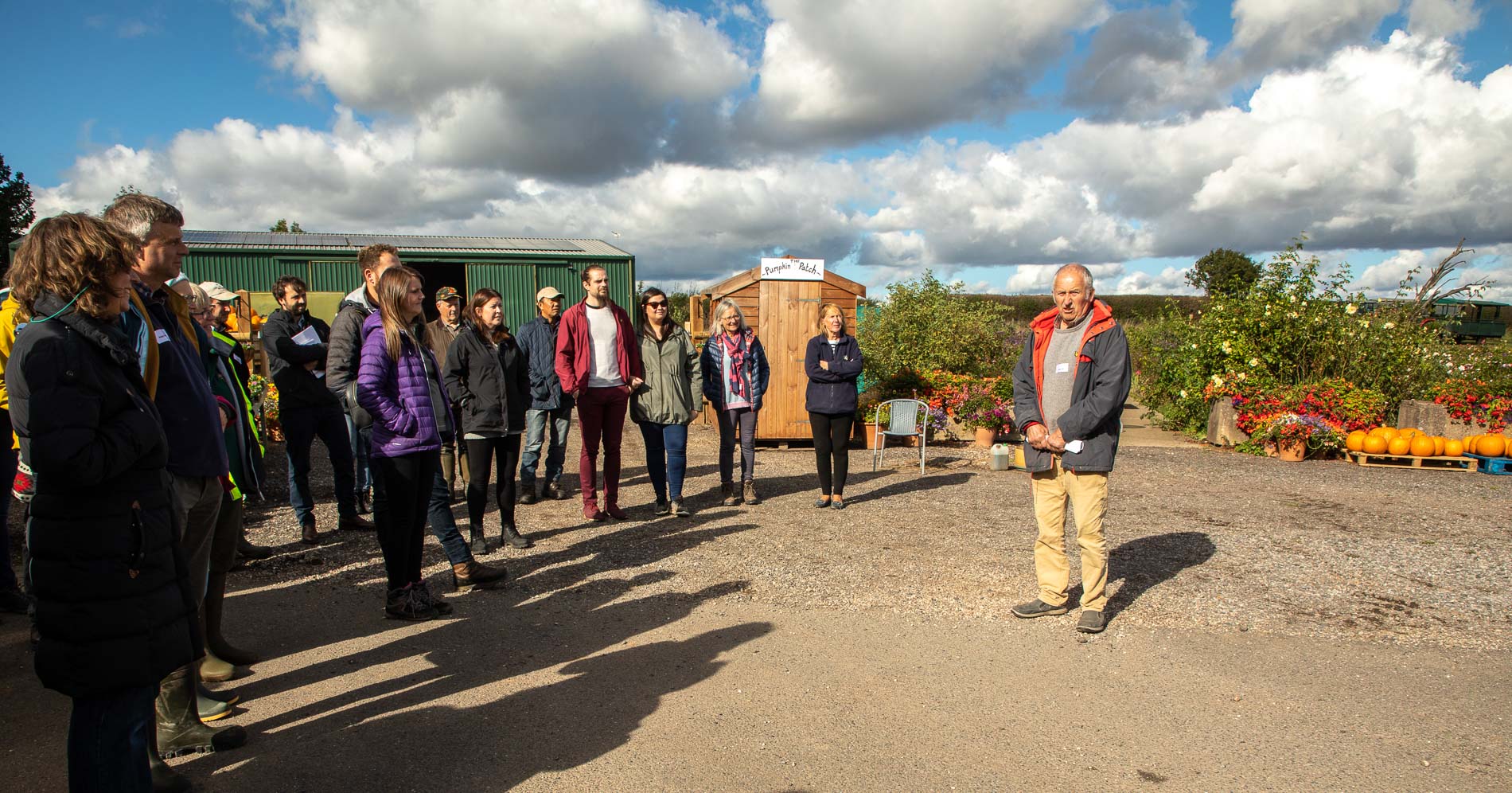
John had provided booklets and pens for everyone to jot down any suggestions/comments on what they were doing wrong or right! Attendees then climbed aboard the two trailers and we headed off in search of the cattle.
The Hill’s run a mixed farm, though mainly it is down to pasture. They do have some glasshouses in which they are raising bedding plants, as well as 10 acres of vegetables and soft fruit – all to sell in the farm shop. Historically the farm was run as a dairy and market garden by John, his parents and grandparents. In 2009 they took advantage of claiming a subsidy to bring a native breed back onto the farm – and pasture fed Shorthorn cattle were introduced along with measures to help improve biodiversity on the farm.
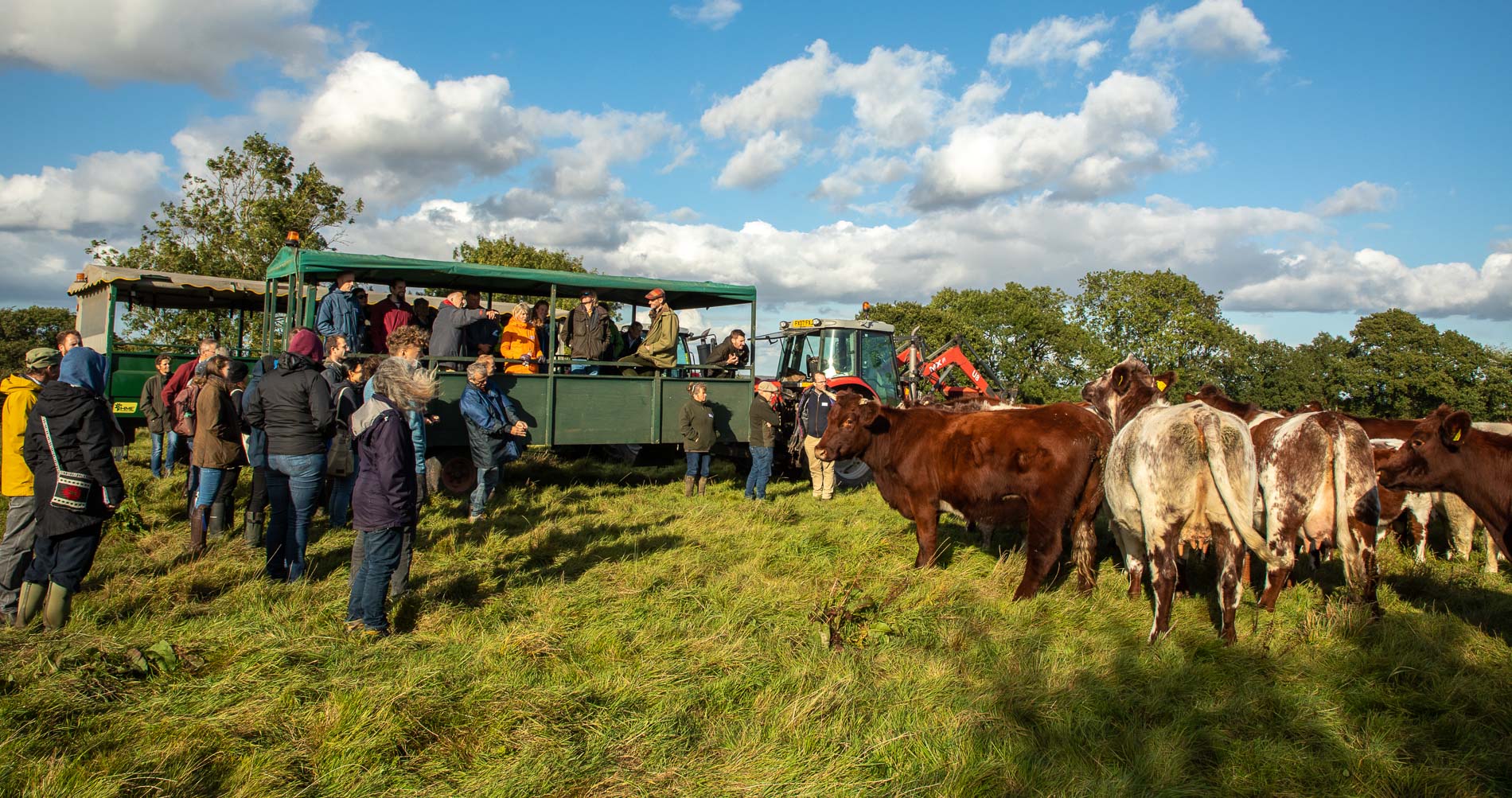
We all stretched our legs and had a walk round the beautiful shorthorns – a closed herd of 97 head in total, including 33 cows. 12-14 steers a year go for beef which are sold through the farm shop. 8-10 breeding heifers per year are also sold.
Presentations and party!
We were very lucky to have two inspirational speakers, Chris Baines and Carrie Rimes.
Chris studied horticulture at Wye College in the late 1960s, where he spent 3 years being taught “how to kill everything”. He has spent his career trying to make amends.
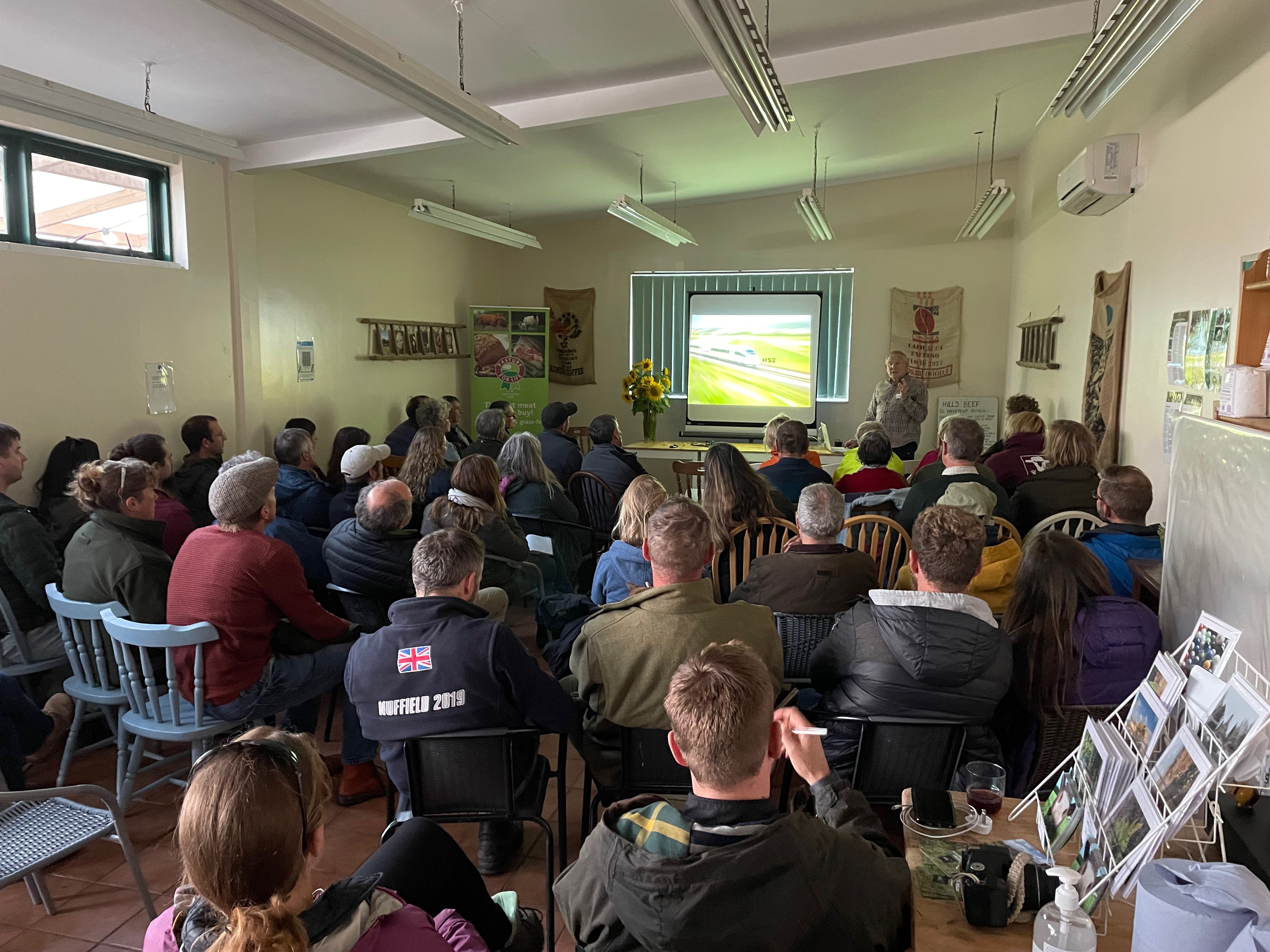
He drew on 50 years of environmental campaigning to discuss the role that nature needs to play in a more sustainable future. He touched on the importance of green infrastructure to the quality of life in towns and cities, the link to natural systems in the wider countryside and the opportunities he sees for rebuilding biodiversity, restoring natural connectivity and developing the kinds of “unholy alliances” that can produce the scale of landscape change we need.

Carrie Rimes drew on her experience in grassland ecology and, more recently, cheesemaking, to explain how pastoral diversity can impact the flavour of raw milk cheese. As one of the most profound edible expressions of farming and ‘terroir’, raw milk cheese has a unique ability to convey flavour compounds originating from grassland species and Carrie has travelled extensively across Europe visiting cheesemakers practising their craft in biodiversity-rich habitats. She is now putting this all into practice in North Wales, on the border of Snowdonia and Anglesey.
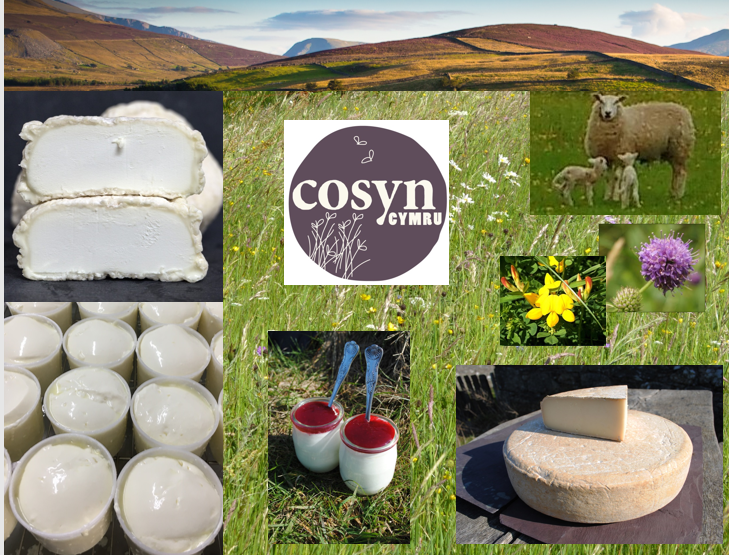
After the two speakers, we could finally celebrate the 10th anniversary of the PFLA with a delicious BBQ – amazing meat courtesy of the Hills, unusual side dishes from the Small Food Bakery including flatbreads made from grain from member, John Turner’s farm. Angus Dalton from Dalton’s Dairy provided delicious ice cream, Carrie Rimes brought samples of her amazing cheese and yogurt from Cosyn Cymru, and there was even gin from South Ormsby Estate!
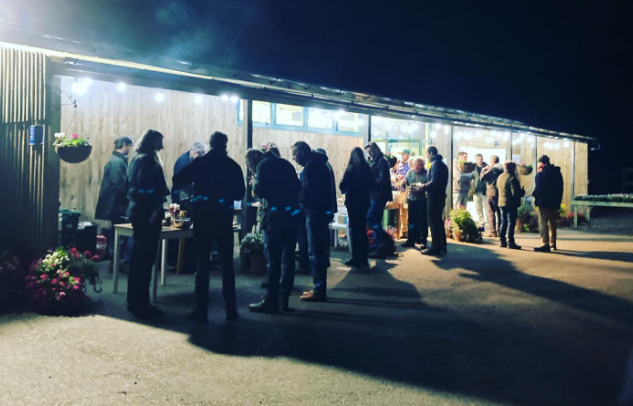
Day 2
The formalities of the Annual General Meeting were completed in good time with outgoing Chair, Fidelity Weston, giving an overview of activity over the previous twelve months which gave plenty of time to travel to our final farm of the Study Tour.
We were welcomed by Hannah Thoroughgood to Inkpot Organic Farm in the pouring rain with hot tea and cake and Hannah took us on a tour of her permaculture farm. She has converted an 18 acre arable field to a thriving garden and permanent pasture. It was fascinating to hear her talk about some of the permaculture principles of setting out the vegetable garden nearest to the house, then the forest garden, stuffed with apples, pears and other tree and shrub bearing fruit, and moving on out to the trees she had planted with turkeys being mob grazed through them and then on out to the field. Great interest was taken in her compost heap, her huge tractor tyres spawning permanent potatoes, beans, pumpkins among lots more beside.

We heard how she had reseeded the arable field by hand, she avoids all machinery if at all possible, using it only on occasions to dig out a couple of ponds and put up a permanent “yurt” with enormous beams that required a tractor to install them.
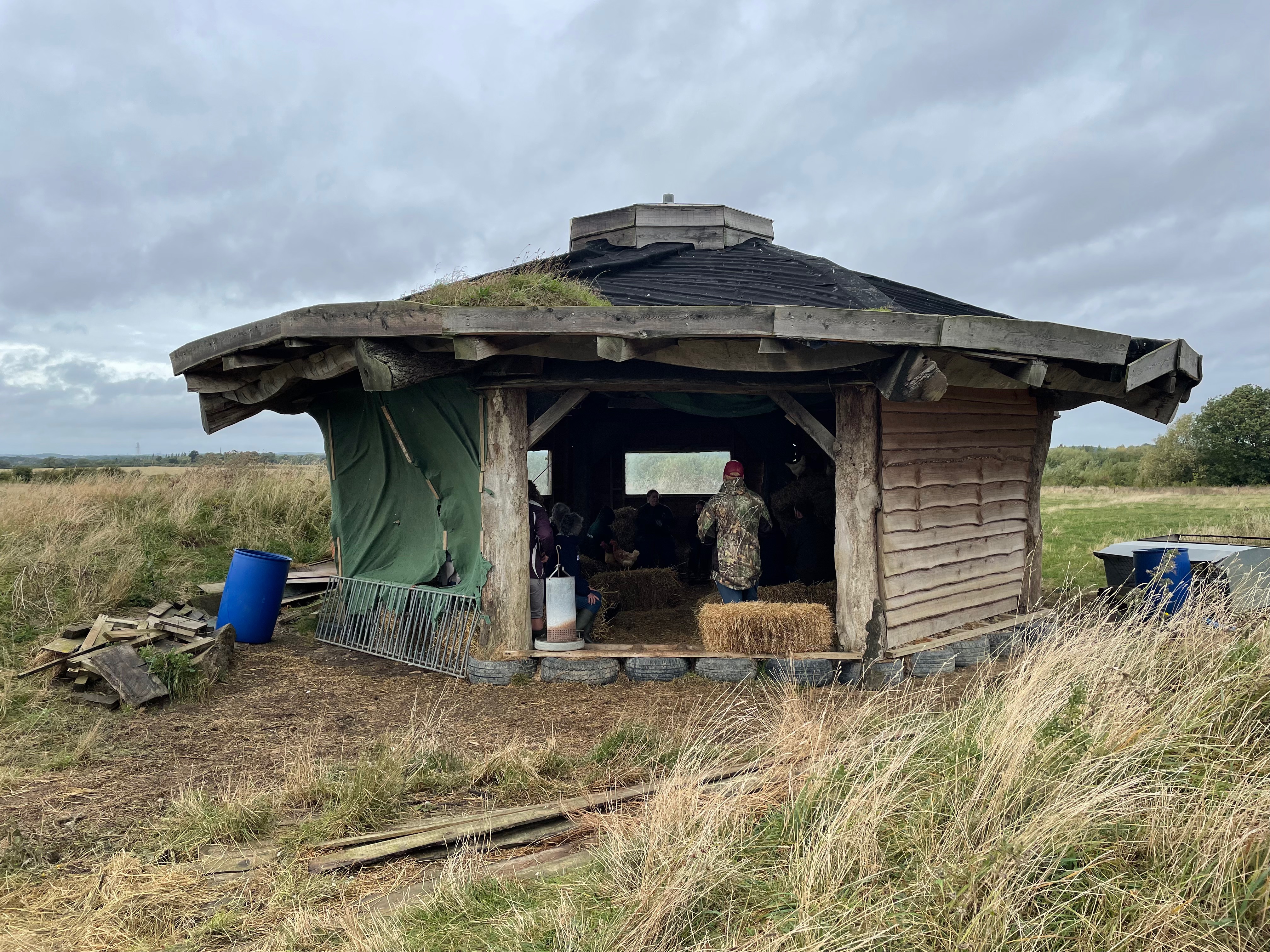
It was inspirational to see what she was achieving. The visit to Hannah completed the Study tour circle from the huge scale of Doddington to the Hills and then to the inspired one woman (plus daughter and intern) enterprise at Inkpot Farm.
With thanks to all our hosts and speakers for a fascinating two days and to all our members to who made the trip in some good and less good weather!



